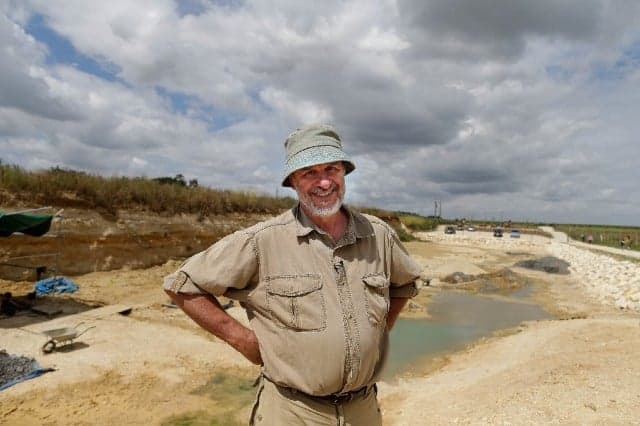French scientists find thigh bone of giant dinosaur in Charente

The thigh bone of a giant dinosaur has been found by paleontologists working at a site in the Charente in south west France.
The two-metre long femur, which weighs half a tonne, was found in 140 million-year-old former marshland now in the vineyards around Cognac.
The Angeac-Charente excavation site is unique in Europe and 7,500 bones belonging to 45 different dinosaur species have been found there since scientists first began excavating it in 2010.
Un fémur de dinosaure géant découvert en Charente https://t.co/KpdOCn6hZI #Rediff
— Le Parisien (@le_Parisien) 24 July 2019
The thigh bone is thought to have belonged to a sauropod, a herbivorous dinosaur believed to be the largest animal that ever walked the earth.
Jean-François Tournepiche, curator at the Angouleme Museum, said: "This femur is huge! And in an exceptional state of conservation. It's very moving."
.jpg)
Scientists at work on the Angeac-Charente site. Photo: AFP
Ronan Allain, paleontologist at the Natural History Museum in Paris, added: "We can see the insertions of muscles and tendons, scars.
"This is a very rare find as large pieces tend to collapse on themselves, to fragment."
Over the last decade, scientists have managed to reconstitute more than 50 percent of a sauropod using several individuals discovered at Angeac.
Comments
See Also
The two-metre long femur, which weighs half a tonne, was found in 140 million-year-old former marshland now in the vineyards around Cognac.
The Angeac-Charente excavation site is unique in Europe and 7,500 bones belonging to 45 different dinosaur species have been found there since scientists first began excavating it in 2010.
Un fémur de dinosaure géant découvert en Charente https://t.co/KpdOCn6hZI #Rediff
— Le Parisien (@le_Parisien) 24 July 2019
The thigh bone is thought to have belonged to a sauropod, a herbivorous dinosaur believed to be the largest animal that ever walked the earth.
Jean-François Tournepiche, curator at the Angouleme Museum, said: "This femur is huge! And in an exceptional state of conservation. It's very moving."
.jpg)
Scientists at work on the Angeac-Charente site. Photo: AFP
Ronan Allain, paleontologist at the Natural History Museum in Paris, added: "We can see the insertions of muscles and tendons, scars.
"This is a very rare find as large pieces tend to collapse on themselves, to fragment."
Over the last decade, scientists have managed to reconstitute more than 50 percent of a sauropod using several individuals discovered at Angeac.
Join the conversation in our comments section below. Share your own views and experience and if you have a question or suggestion for our journalists then email us at [email protected].
Please keep comments civil, constructive and on topic – and make sure to read our terms of use before getting involved.
Please log in here to leave a comment.